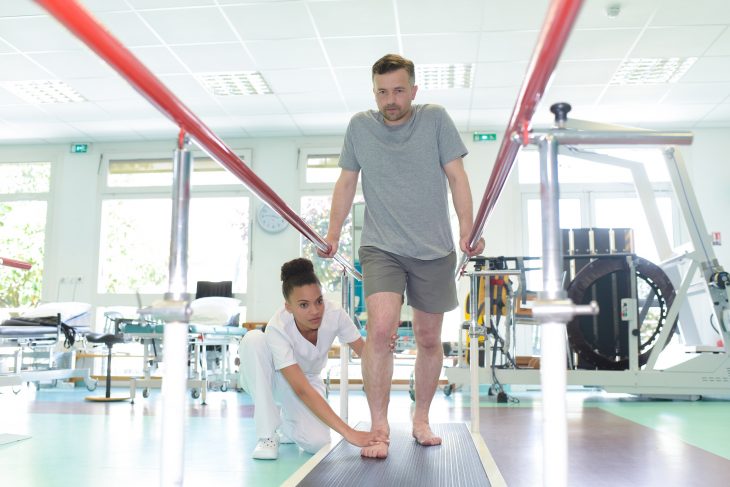
Physical therapy plays a vital role in improving the quality of life for individuals with various musculoskeletal conditions and injuries. While it may seem like a serious and straightforward discipline, there are numerous intriguing aspects and fun facts associated with physical therapy. In this article, we’ll explore the exciting world of physical therapy, uncovering little-known facts that will leave you amazed and enlightened. So, let’s embark on this captivating journey and discover the wonders of physical therapy!
The Origins of Physical Therapy
Physical therapy has a rich history that dates back centuries. It traces its roots to ancient civilizations, where manual techniques and therapeutic exercises were employed to treat injuries and disabilities. In fact, Hippocrates, the famous Greek physician often referred to as the “Father of Medicine,” used hydrotherapy and massage to aid in the recovery process. This historical foundation laid the groundwork for the modern practice of physical therapy.
Polio Epidemic
The polio epidemic in the early 20th century played a significant role in shaping the field of physical therapy. The demand for therapeutic interventions to help polio survivors regain mobility led to the development of specialized techniques and equipment.
World War I and II
The two World Wars played a crucial role in advancing physical therapy as a profession. Physical therapists were instrumental in rehabilitating injured soldiers and helping them reintegrate into society.
Physical Therapists
Physical therapists are highly trained healthcare professionals who specialize in evaluating, diagnosing, and treating conditions that affect a person’s physical abilities. They possess extensive knowledge of anatomy, physiology, and biomechanics, enabling them to provide effective treatments and rehabilitation plans. Physical therapists work closely with patients to alleviate pain, restore mobility, and improve overall functionality, making a remarkable difference in people’s lives.
Physical Therapy for Diverse Conditions
Contrary to popular belief, physical therapy extends beyond treating injuries related to sports or accidents. It encompasses a wide range of conditions, including neurological disorders, cardiovascular conditions, orthopedic conditions, and chronic pain. Whether it’s helping stroke patients regain motor skills, assisting individuals with Parkinson’s disease in improving balance and coordination, or managing chronic pain through therapeutic exercises, physical therapy offers a comprehensive approach to healthcare.

The Power of Exercise as Medicine
Exercise is a cornerstone of physical therapy, and its benefits extend far beyond muscle strength and flexibility. Regular physical activity has been scientifically proven to boost mood, enhance cognitive function, and promote overall well-being. Physical therapists leverage the power of exercise to improve cardiovascular health, manage chronic conditions, and optimize recovery from injuries. This highlights the holistic approach of physical therapy, addressing not only the physical aspects but also the mental and emotional well-being of patients.
Manual Therapy
Manual therapy is a hands-on approach used by physical therapists to diagnose and treat musculoskeletal conditions. It involves skilled manipulation and mobilization of joints and soft tissues, providing pain relief and restoring function.
Electrotherapy
This involves the application of electrical stimulation to muscles to promote healing, reduce pain, and improve muscle function.
Ultrasound Therapy
High-frequency sound waves are utilized to alleviate pain, reduce inflammation, and enhance tissue healing.
Aquatic Therapy
Water-based exercises provide a low-impact environment that reduces stress on joints, making it ideal for rehabilitation and pain management.
Virtual Reality (VR) Therapy
By immersing patients in simulated environments, VR therapy helps improve balance, coordination, and motor skills.
Dry Needling
This technique involves inserting fine needles into trigger points to relieve muscle pain and improve range of motion. However, it’s important to note that dry needling should only be performed by licensed physical therapists with proper training.
Pilates and Yoga
Many physical therapists incorporate Pilates and yoga exercises into their treatment plans. These practices can enhance flexibility, strength, and balance, aiding in the recovery process.

Physical Therapy in Women’s Health
Physical therapy plays a crucial role in addressing women’s health issues throughout various life stages. From pregnancy-related musculoskeletal pain to pelvic floor dysfunction, physical therapists specialize in providing comprehensive care for women. They offer treatments for conditions such as urinary incontinence, pelvic organ prolapse, and prenatal and postnatal care. By focusing on women’s specific needs, physical therapy empowers women to optimize their physical well-being.
Animal-Assisted Therapy
Animals have a remarkable ability to provide emotional support and aid in the healing process. Animal-assisted therapy, integrated into physical therapy, involves the presence of trained therapy animals during sessions. Interacting with these animals can reduce stress, improve mood, and enhance motivation, leading to better treatment outcomes. From dogs and cats to horses and dolphins, animals have proven to be invaluable companions in the world of physical therapy.
Physiotherapy vs. Physical Therapy
While physical therapy is the commonly used term in the United States, many countries, including Canada, Australia, and the United Kingdom, refer to the profession as physiotherapy.
Superheroes in Physical Therapy
Physical therapists often work with actors playing superheroes in movies. They help these actors recover from injuries and perform stunts safely.
A World Record in Balance
In 2013, a physical therapist from Germany set a Guinness World Record for the longest time balancing on a Swiss exercise ball. He maintained balance for an astounding 53 hours and 33 minutes!
Conclusion
Physical therapy encompasses a vast array of fascinating aspects, from its historical origins to its innovative techniques and diverse applications. Physical therapists, with their expertise and dedication, make a profound impact on the lives of individuals seeking rehabilitation and improved functionality. By understanding the fun facts and nuances of physical therapy, we gain a deeper appreciation for this essential healthcare discipline.
Frequently Asked Questions (FAQs)
What is the educational path to becoming a physical therapist?
To become a physical therapist, one must earn a Doctor of Physical Therapy (DPT) degree. This typically requires completing a bachelor’s degree, followed by a three-year professional DPT program.
How long does a physical therapy session usually last?
The duration of a physical therapy session can vary depending on the individual’s condition and treatment plan. On average, sessions last between 30 to 60 minutes.
Are there any age restrictions for physical therapy?
Physical therapy is suitable for individuals of all ages, from infants to the elderly. Therapists tailor treatment plans to meet the specific needs and abilities of each age group.
Can physical therapy help manage chronic pain?
Yes, physical therapy is an effective approach to managing chronic pain. Therapists utilize various techniques such as exercise, manual therapy, and modalities to alleviate pain and improve quality of life.
Is a referral from a physician necessary to receive physical therapy?
In many cases, a referral from a physician or healthcare provider is required for insurance coverage. However, some states allow direct access to physical therapy, enabling individuals to seek treatment without a referral.
Was this page helpful?
Our commitment to delivering trustworthy and engaging content is at the heart of what we do. Each fact on our site is contributed by real users like you, bringing a wealth of diverse insights and information. To ensure the highest standards of accuracy and reliability, our dedicated editors meticulously review each submission. This process guarantees that the facts we share are not only fascinating but also credible. Trust in our commitment to quality and authenticity as you explore and learn with us.
